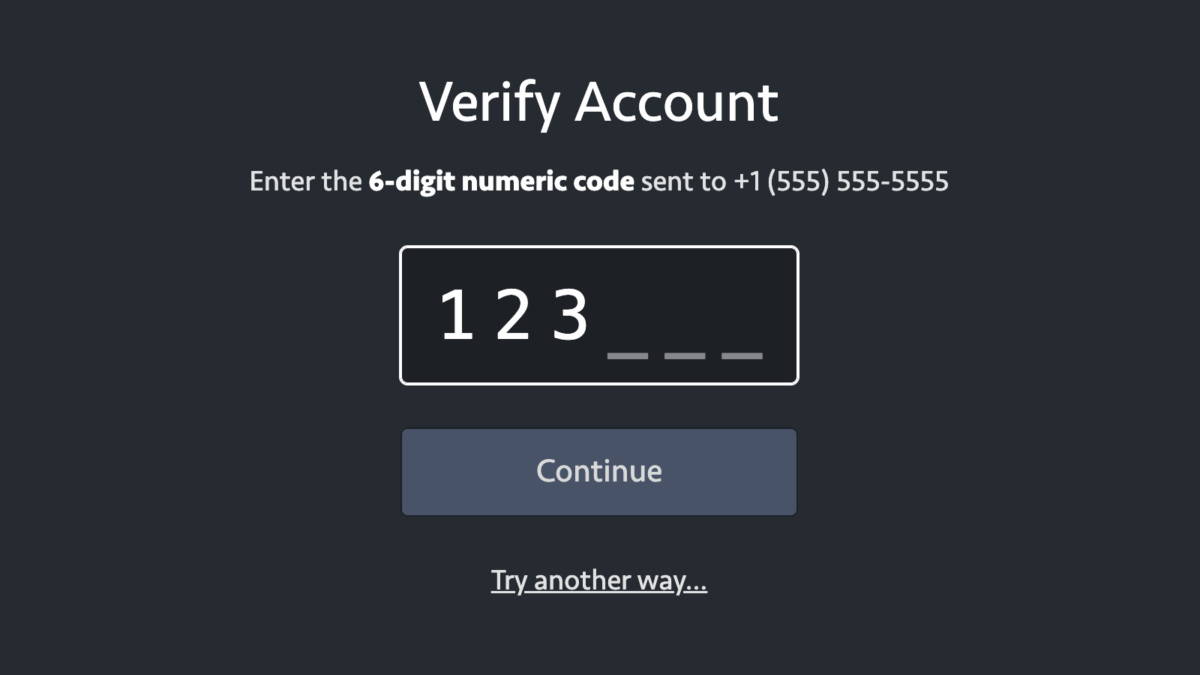
"A single <input> element: That's where the OTP magic happens! Let's break down each of its attributes: Even though our passcode will consist of numbers, it isn't actually a number: A value of 000004 should not be the considered the same as a value of 4. For that reason, we follow the HTML spec and set type="text". inputmode="numeric" enables a numeric virtual keyboard on touch devices."
"autocomplete="one-time-code" adds support for autofill from password managers or via SMS. maxlength="6" prevents visitors from typing too many characters. We can opt into client-side validation by adding two more: pattern defines the code we expect, in this case exactly six ({6}) numeric digits (\d). required tells the browser this field must have a value that satisfies the pattern. Now all our OTP-specific features are accounted for, but an input is meaningless without context."
One-time passcodes should be collected with a single text input rather than a numeric input so leading zeros remain significant. Use type="text" with inputmode="numeric" to prompt numeric keyboards on touch devices. Add autocomplete="one-time-code" to enable autofill from SMS or password managers and set maxlength="6" to limit input length. Optionally include pattern="\d{6}" and required to enable client-side validation for exactly six digits. Avoid segmenting the field into multiple inputs or adding extra dependencies; a simple labeled form with a submit button and support link completes the user interface. This approach requires only HTML and no CSS hacks or JavaScript frameworks.
Read at Cloud Four
Unable to calculate read time
Collection
[
|
...
]